#hipparion
Explore tagged Tumblr posts
Text
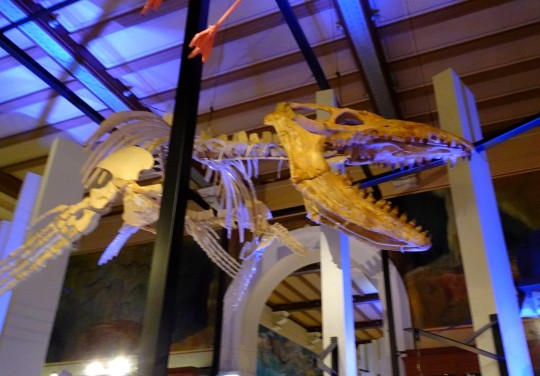
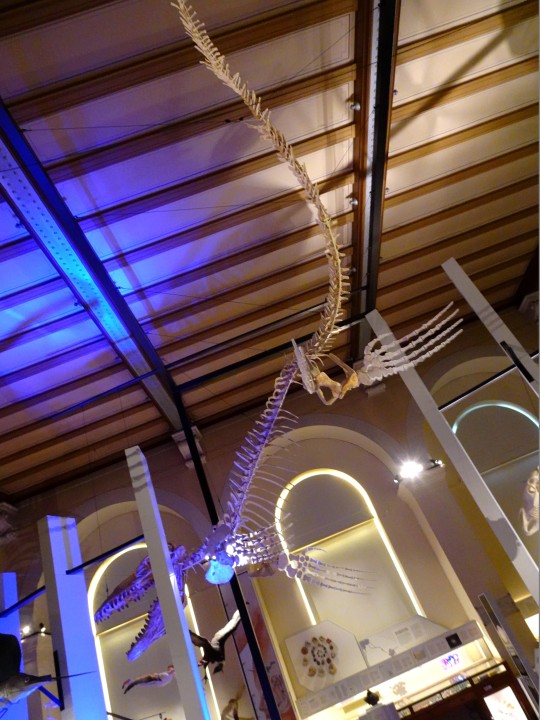
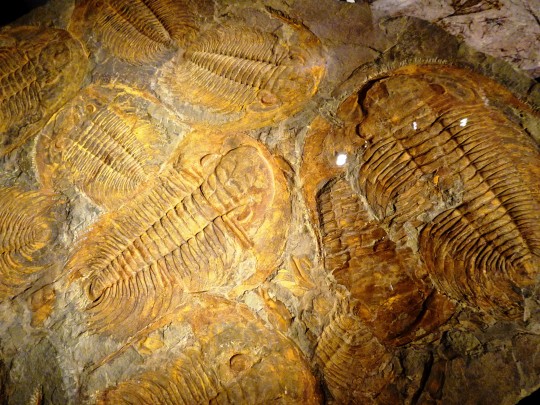
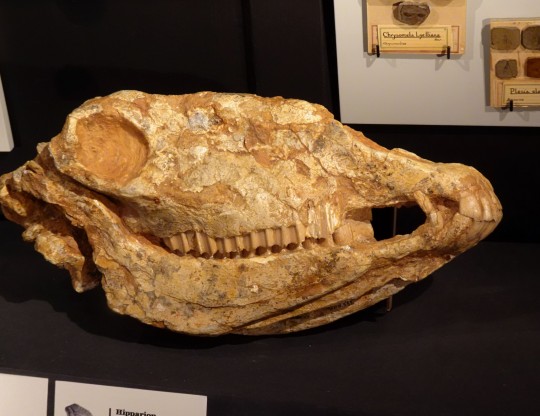
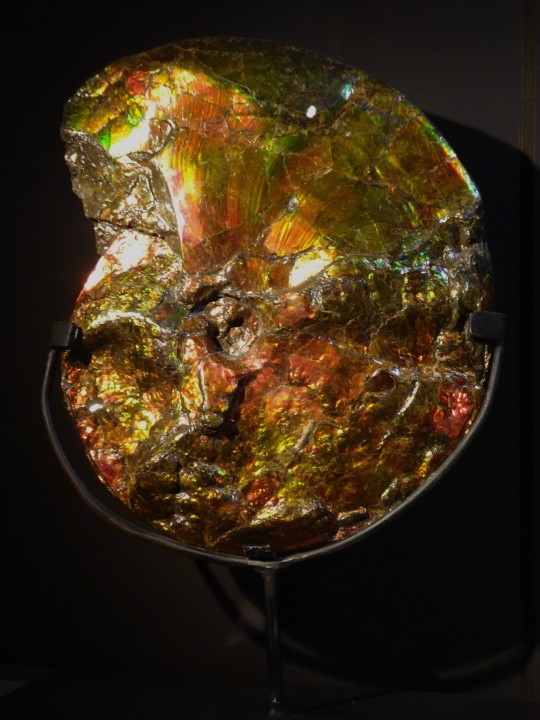
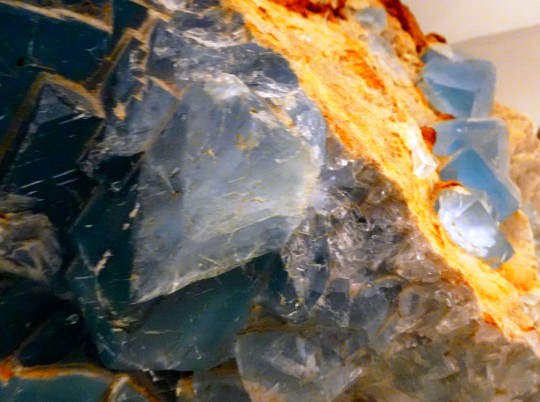
Marseille. Le Palais Longchamp abrite deux musées, ici le Muséum d'Histoire Naturelle.
Mosasaure Prognathodon
idem
Trilobites Paradoxides gracilis
crâne d'Hipparion, miocène
ammonites fossilisées en opales, je suppose ??(pas d'explication sur place)
cristaux d'améthyste, je pense (là, c'est ma faute : je ne l'ai pas noté !)
#marseille#longchamp#palais longchamp#muséum d'histoire naturelle#paléontologie#fossile#mosasaure#prognathodon#mésozoïque#trilobite#paradoxides#paléozoïque#hipparion#cheval fossile#équidés#miocène#néozoïque#cristal#cristaux#améthyste#opale#ammonite#crâne#crâne de cheval
4 notes
·
View notes
Text
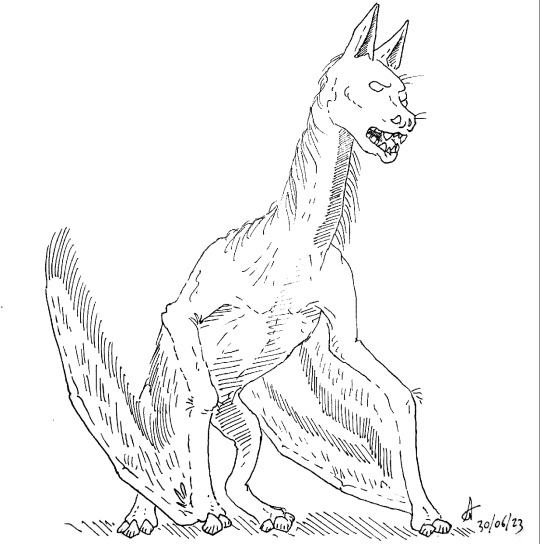
My reconstruction of a “realistic ;)” winged horse, after the mythical Pegasus, made in collaboration with my students at a course of Systematic Zoology, as presented during the 2023 SpecPosium (recording pending).
As the professor pointed out, a cellulose-based diet would make the Pegasus far too heavy to take flight, as it requires a large and bulky gut. We changed its diet to that of an opportunistic predator/scavenger, exploiting the fact that long-distance soaring makes it easy to find carrions (see: condors, giant Azhdarchids). Face and teeth had also to be redesigned of consequence: unlike ruminants, horses still have canines that can be repurposed for carnivory. No longer required to be long to keep the eyes above the grass while grazing, the jaws are much shorter for better leverage when biting into bones.
The loss of heavy guts also allows to move the body’s center of gravity forward, between the shoulders, where massive pectoral and dorsal muscles are attached to power the wings. Unlike birds, but as in large pterosaurs, wings have to carry much of the body weight on the ground, and provide the main force for take-off.
Since a re-evolution of bird-like feathers seems unlikely, we went for a wing surface made up of stiff hair-derived bristles with essentially the same function, each bundle controlled by skin muscles. We derived the Pegasus not by the modern horse Equus but by the earlier three-toed equids such as Hipparion, so that one toe could be repurposed into a wing finger as in pterodactyls.

#speculative biology#speculative zoology#speculative evolution#alternate evolution#biology#my work#didactic
43 notes
·
View notes
Text
Whilst K'lyhhia does have a traditional Miqo'te name, she usually just goes by Lyhhia.
She doesn't really have any connection to her Miqo'te heritage and doesn't consider herself part of the Hipparion (K) tribe. She doesn't really even worship Azeyma or indeed any of the Twelve, having been raised to worship the kami. The only reason she knows her real name is because she was found in the remains of a bassinet, upon which her name was engraved.
She does want to learn more about Miqo'te culture, and is always longing for information about her real family, but she has so far come up empty-handed as she's not even sure where to look.
2 notes
·
View notes
Text
Raephyn K'lynth
[Ray-fhin Koo-lin-th ]
Their name was given by their adoptive Miqo'te parents, so pronunciation sounds more feline.
Ph, K, & Th sounds are sharper, like imitating a cat hissing/spitting. But also K is koo, since one of their mothers is from the Hipparion tribe.
Due to their parentage and voidsent things, Raephyn can propperly pronounce it.

8/13/23
How do you pronounce your wol(oc)'s name?
52 notes
·
View notes
Text

The Quizzer Book of Knowledge: Nature. Written and edited by George Beal. 1978.
Internet Archive
#mammals#ungulates#equids#wild asses#african wild asses#zebras#horses#przewalski's horses#tarpans#prehistoric#prehistoric mammals#hyracotherium#hipparion
170 notes
·
View notes
Photo

New heraldry inspired paleoart available on Redbubble featuring the three-toed horse Hipparion! https://www.redbubble.com/shop/ap/51979061 ArtStation / Twitter
88 notes
·
View notes
Photo

Hipparion by RomanYevseyev
3 notes
·
View notes
Photo

Hipparion was a small three-toed horse with a wide distribution from North Africa, to Eurasia and Africa. It lived from the Miocene to the Pleistocene. Many species were described. Neohipparion affine from North America was one of the larger ones. Illustration for the Museum of the Rockies #Hipparion #horse #paleoart #paleontology #fossil #neohipparion (at Nebraska) https://www.instagram.com/p/BuiWqxsFwIY/?utm_source=ig_tumblr_share&igshid=1885m9ha2t2xt
2 notes
·
View notes
Text
SagoliiSaffron - Super Spices
🥥🌻Golden Milk🌻🥥
Golden milk has traditionally been used by Thanalani and Thavnairian households as a remedy for illness, but this drink can benefit people even if they dont have the sniffles.
Turmeric, one of the main ingredients, is great for your liver and has anti-inflammatory properties.
Turmeric was once called a poor man’s saffron, but now we know how incredibly healing and powerful this spice truly is. Curcumin is the active compound in turmeric that is powerfully anti-inflammatory as well as rich in antioxidants. Curcumin has powerful antioxidant effects. It neutralizes free radicals on its own, and then stimulates the body’s own antioxidant enzymes.
Curcumin can cross the blood-brain barrier and has been shown to lead to various improvements in the pathological process of Alzheimer’s disease. Curcumin can help treat symptoms of arthritis and is in some cases more effective than anti-inflammatory drugs.
To make this drink gather: 3 cups coconut milk 1/4 tsp ginger 1 1/2 tsp ground turmeric 1 cinnamon stick 1 tbsp coconut oil 3 tbsp honey (also chock full of things that are great for your body) A pinch of pepper. Mix these all into a small pot and bring to a boil then simmer for 5-10 minutes. Ta-Da!!!
If you ever find yourself in the company of a Hipparion Miqo'te from the Spice & Sotol Trade(K'ajia's family branch), they will be quick to offer you this drink if you seem under the weather.
If not, they are not worth the salt they peddle!
5 notes
·
View notes
Text
TOTAL DRAMA PALEONTOLOGY
in the world tour episode “chinese fake-out”

chris tells “in 8 million years bc, king dim sum led a battalion of donkey warriors down this great wall!”, even though it’s possibly not true

courtney says “8 million bc was the miocene era, there were dinosaurs!”

OMG THE MIOCENE IS MY FAVORITE ERA AND SHE SAID THATTTT
she’s obviously wrong about dinosaurs other than birds, which were badass during the miocene anyways but she IS right about the epoch, 8 million BC is the Miocene, to be more precise the Tortonian stage

i regret clicking on all of the ages i’m a nerd ha
BUT
ignoring that the legend of king dim sum was most likely false, remember that chris also said “donkey warriors”, and the episode was taken place in china too
well
according to PaleoBioDB, in the late miocene of china, there was really something like a donkey
but no, not really
it’s a primitive horse instead
called Hipparion

maybe those were the donkey warriors down the great wall after all
#total drama#total drama world tour#paleontology#prehistory#tdwt#chinese fake-out#prehistoric-wildlife#paleobiodb#cenozoic#neogene#miocene#tortonian#china#hipparion#courtney#chris#i apply paleontology to everything#i wasted 10 minutes of my life#i need to watch total dramarama too#the cenozoic is underrated
1 note
·
View note
Photo





🚀🐗🦓 REDBUBBLE UPDATE 🦓🐗🚀
Transgender retro aliens, zebras, The devil & Scp postcards! + Some older art tossed up as stickers and prints. I also have better quality prints over on Inprnt.
#art tag#The little anime aliens are new ocs and I like them very much#their names are pegasus and hipparion
101 notes
·
View notes
Photo

Shit!! A new type of horsie I didn’t even fucking knew existed! Fucking score! God damn!
1 note
·
View note
Text
Listen I just think that horses look better with three toes, which is why Hipparion is the ideal running horse
#with my ‘give TES horses more toes’ proposal we simply would be taking the horse as is and giving them two more vestigial toes#so we are not utilizing Hipparion in its full form#Con stop yapping#zaan do kel
2 notes
·
View notes
Text
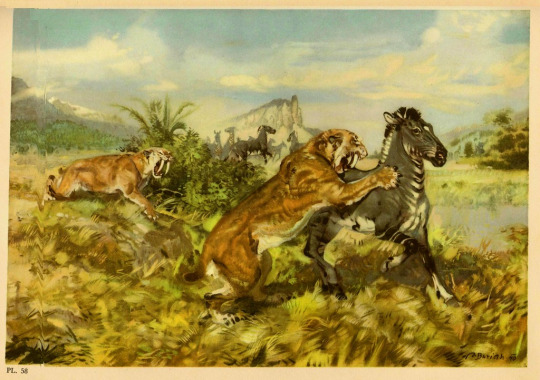
Machairodus. Zdeněk Burian.
via
222 notes
·
View notes
Text

Another sketch brought to you by #paleostream!
Choerolophodon, a quite small and weird proboscidean next to a Hipparion.
#paleoart#sciart#elephant#horse#proboscidean#miocene#extinct#small island elephant#looks at these tusks and the lower jaw!
403 notes
·
View notes
Photo

Hipparion, by Heinrich Harder
2 notes
·
View notes